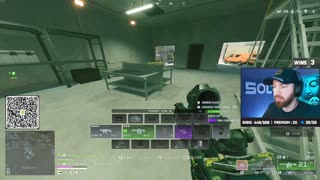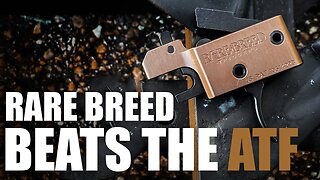Premium Only Content

What have archaeologists found about Jesus?
What have archaeologists found about Jesus?
Archaeologists have not found direct physical evidence of Jesus himself—such as his body, personal belongings, or writings—but they have uncovered a great deal of material that provides important context for understanding the historical Jesus and the world in which he lived. Here are the main categories of archaeological discoveries related to Jesus:
1. Historical and Geographical Confirmation
Many sites and artifacts confirm details mentioned in the New Testament, supporting the historical plausibility of the Gospels.
Nazareth: Archaeological digs have confirmed that Nazareth was a small, rural village in the 1st century, aligning with Gospel accounts of Jesus' upbringing.
Capernaum: Remains of a synagogue and houses dating to Jesus' time have been found here. This town was a base of Jesus' ministry.
Sea of Galilee towns: Places like Bethsaida and Magdala (home of Mary Magdalene) have yielded Roman-era buildings, roads, and coins.
Jerusalem: Extensive excavations have confirmed the layout of Herod’s Temple, the Pool of Bethesda, and the Pool of Siloam—places where Jesus is described as performing miracles.
2. Artifacts Related to Key Figures in Jesus' Life
Artifacts and inscriptions confirm the existence of people Jesus interacted with:
Pontius Pilate Inscription: A stone discovered in Caesarea Maritima bears the name of Pontius Pilate, confirming his role as Roman governor of Judea.
Caiaphas Ossuary: A richly decorated bone box (ossuary) found in Jerusalem is inscribed with the name "Joseph, son of Caiaphas," the high priest who, according to the Gospels, presided over Jesus' trial.
James Ossuary (disputed): A bone box inscribed "James, son of Joseph, brother of Jesus" was discovered, but its authenticity remains debated due to concerns about forgery.
3. First-Century Synagogues
Excavations of synagogues from the 1st century in Galilee, such as in Magdala, help confirm the setting where Jesus may have preached and read scriptures.
4. Crucifixion Evidence
No crucifixion artifacts tied directly to Jesus exist, but evidence shows how Romans carried out crucifixions:
Yehohanan's Skeleton: A man named Yehohanan was crucified in the 1st century. His heel bone was found with a nail still embedded, offering insight into Roman crucifixion practices.
5. Dead Sea Scrolls and Contemporary Texts
While not mentioning Jesus, these ancient Jewish texts found at Qumran give insight into the religious and political environment of the time, such as messianic expectations and tensions with Rome.
Summary:
Archaeology hasn't proven Jesus existed in a scientific sense, but it supports the historical reliability of the places, people, and customs mentioned in the Gospels. It affirms that the New Testament reflects a real world consistent with 1st-century Judea.
Would you like info on ongoing excavations or recent discoveries related to this topic?
-
 LIVE
LIVE
Jeff Ahern
1 hour agoThe Saturday Show with Jeff Ahern
5,363 watching -
 29:53
29:53
Afshin Rattansi's Going Underground
2 days agoBRICS MUST Replace the US’ Authoritarian International Financial System! (Prof. Steve Keen)
1.28K9 -
 31:27
31:27
Robbi On The Record
3 days ago $4.77 earnedWhat the Bible say about Astrology.. The Conversation Culture Has Been Avoiding | ft. JT Follows JC
31.2K7 -
 17:38
17:38
Professor Nez
2 hours ago🚨THIS IS A NATIONAL SECURITY EMERGENCY: Stephen Miller with CHILLING WARNING for AMERICA
32.9K67 -
 LIVE
LIVE
tminnzy
1 hour agoBLACK OPS 7 MULTIPLAYER ROAD TO MASTER PRESTIGE
170 watching -
 47:10
47:10
The Rubin Report
6 hours agoWhat Really Happened on ‘The View’ & ‘Curb Your Enthusiasm’ | Cheryl Hines
177K42 -
 3:08:37
3:08:37
LumpyPotatoX2
5 hours agoWhere Winds Meet: New Level Cap + Rumble Wallet - #RumbleGaming
30.8K1 -
 LIVE
LIVE
SOLTEKGG
3 hours ago🔴LIVE - Battlefield 6 - Going Pro in RED SEC
196 watching -
 11:37
11:37
tactical_rifleman
2 days agoRare Breed BEATS THE ATF | FRT-15 | Tactical RIfleman
72.3K23 -
 2:51:46
2:51:46
Pepkilla
4 hours agoMore GOLD Camo's PLEASE Grind Call Of Black Ops 7
18K2